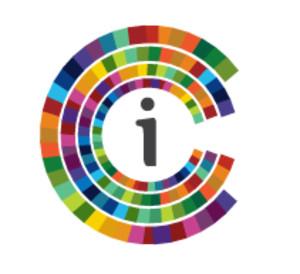Pages and pages of technical text! Unending columns of numbers! Death by PowerPoint! We’ve all sat through report meetings like this and come away wondering what it all means.
Clearly communicating the results of outreach efforts to funders, stakeholders, and staff is extremely important. In the 1.6 million non-profit organizations in the United States, 60% of their annual budget is spent on programming and education. In the 35,000 museums alone, 2 BILLION dollars is spent on education with 75% going to K-12 programs.
How do you show that funders’ money is being used to make an impact on the next generation of supporters? Education is a slow burn. The programming you provide may not bear fruit for many years. How do you viscerally illustrate success? Create a funder’s journey!
Tip #1--Gather information all along the way.
Plan a system to gather, organize, and document information as you develop and implement your programs. Information types might include:
1. Pre and post-participation surveys. This may be as simple as a Google form. There are many examples of pre/post-event questions online. Also, formulate questions from any grant applications or funding stipulations to have the specific information that funders need.
2. Photos and videos-Visual documentation of participation brings life into reports. Education programming is about people having impactful experiences. Assign staff members to take photos or video. Also, consider getting some photos or videos professionally done for future promotion and reporting. Of course, always get signed permission for photos or videos.
Tip #2--Snatch a story
As programming is delivered, great anecdotal stories can be gathered. Did a child have an “Aha” moment when presented with something novel? Did a group of students connect your content to a bigger issue in their community? Did a teacher find a fresh way to teach the same old standards?
Keep track of these types of stories. If possible, get direct quotes from participants or community members about their experiences. Also, samples of learners’ thinking and activity outcomes make great illustrations of impact.
Tip #3-Build on your story with visual data
Collecting data will be key to fleshing out your impact reports. Funders want to quantify impact. Include graphs that illustrate key components of your program. Some examples might include:
1. Poverty rate of schools. This information usually is extrapolated from the Federal free and reduced lunch percentage rate for public schools. These numbers are publicly available and can be found on each state’s public office of education website. Educators will usually know the information for their own school also so it might be a question to include on the participant survey or registration. Private schools do not use this information but may have other statistics.
2. Diversity of the population. Racial and ethnic percentages for the public school population is also publicly available on the state websites. CAUTION: Surveying minors has ethical and legal considerations. Comply with all legal and industry guidelines.
3. Outreach distance maps. General participant locations give context to your outreach efforts. Use city and state information to build an outreach map in tools like MapQuest. This will give not only location information but distance and driving times. Showing funders that you are expanding your reach while conserving staff time and expense builds support for future funding.
1,650 miles! One MentorIC organization mapped out how many miles and time (23 hours) it would take to reach all of the schools participating in one of their education outreach programs.
Tip #4-Avoid personally identifiable information in reports.
Particularly when gathering examples or information from minors, be cautious about identifying people specifically. This can also apply to adults to some extent. Some general guidelines are:
1. Don’t post anything on the internet, website, or social media without EXPRESS written and signed permission. If the person is a minor, the legal parent or guardian must be contacted for signature.
2. Use first name only for photos, anecdotes, quotes, etc. Create a new name if needed or use “Fifth-grade student, Peoria Middle School’ for example.
3. Try not to show photos of school names. This can include students wearing clothing or uniforms with school logos.
Side views of faces, examples of student work without the names on them, or photos of projects can be used creatively to illustrate your point.
Creating a well crafted story based on evidence gathered from your programming takes funders and stakeholders on a journey they can fully understand, support, and want to repeat. They will walk away from the annual meeting feeling good about their funding decision and ready to spread the word about your organization’s success and reach.


